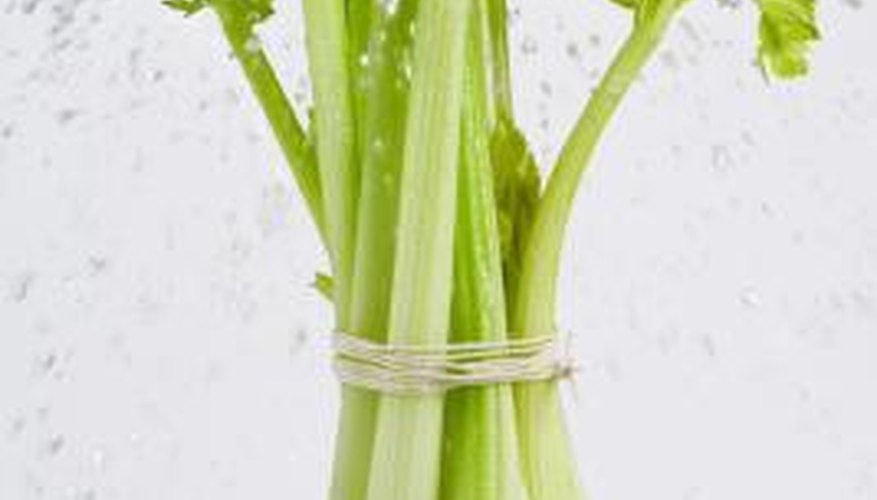Bitter celery is an unacceptable taste for some people. The bitter taste in celery is due to the build-up of chlorophyll in the stalks. To get rid of the bitter taste, you must blanch the celery by protecting the stalks from sunlight during their last 10 to 14 days of growth. When blanched, the celery will lose much of its green colour and some of its nutritional value; however, the stalks will be more tender.
- Bitter celery is an unacceptable taste for some people.
- The bitter taste in celery is due to the build-up of chlorophyll in the stalks.
Measure the circumference and height (minus the leaf tops) of the largest stalk of celery in the garden.
Cut rectangles out of your cardboard box. Make the length equal to the celery stalks' measured circumference plus 4 inches. Make the height equal to the height of the measured celery stalks.
Roll the cardboard rectangles into tight tubes to make them more pliable and encourage them into a cylindrical shape.
Place a cardboard cylinder loosely around the stalks -- with an inch or so of space around the stalks -- of each celery plant. Tape the cylinder closed with a length of duct tape.
Remove the cylinders at harvest time.
TIP
Make sure to give your celery adequate water. Underwatering leads to bitter stalks. If you do not grow your own celery, avoid bitter bunches. Buy only the palest celery stalks that have no small seedstems attached to the bunch. The whiter the celery, the lower its nutritional value. Disguise the taste of bitter celery with peanut butter or ranch dressing. Slowly decrease the amount of toppings you use every time and you'll eventually get used to the bitter taste. Cooked celery is sweeter than raw celery. To retain a little crunch, blanch the celery for 1 to 2 minutes in hot water, then dip it in ice cold water to stop the cooking process.
